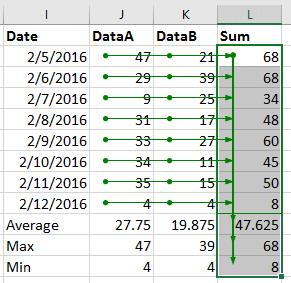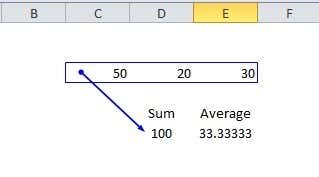
This allows you to trace cells in the opposite direction meaning you can start from a cell that contains a formula and trace back to all the cells that are referenced by that formula.Ĭells that are referred to by a formula in another cell are called precedents. You can press the Remove Dependent Arrows button to remove one level of dependents. Pressing the Trace Dependents button again will display another set of arrows, indicating the next level of dependents (or indirect dependencies). The tracer arrows indicate that cell C2 is directly referred to by the formulas in cells "D5", "D6", "D7", "D8", "D9", "D10" and "D11". The dot in cell C2 indicates that it has dependents. The arrows are pointing to all the cells that contain a formula that refers to cell "C2".

You can find out which cells refer to this value by selecting the cell and pressing the Trace Dependents button. To remove the next level of arrows, click the Remove Dependent Arrows button again. Remove Dependent Arrows - Removes tracer arrows from one level of precedents on the active worksheet. If Excel beeps it means you have traced all the levels of the formula. To add additional levels of indirect dependents, click the Trace Dependents button again. Trace Dependents - Draws a tracer arrow to the active cell from formulas that depend on the value in the active cell. You can use the shortcut (Ctrl + ] ) to select the cells that are dependents of the active cell.Īlternatively you can select (Tools > Formula Auditing > Trace Precedents). These are cells that use the value in the selected cell.Ī cell that has dependents can contain either a formula or a constant value. Remove All Arrows - Removes all tracer arrows from the worksheet.Ĭells which contain formulas that refer to other cells are called dependents. The terms dependent and precedent refer to the relationships that cells containing references to other cells have. Tracer arrows are also known as "cell tracers" and are always in the direction of the data flow.ĭouble clicking on any of the arrows you will be moved to the cell at the end of the arrow. If a referenced cell contains a formula and that formula also contains an error, then a red line is drawn between the formula cells. There are 6 buttons on the Formula Auditing toolbar that can be used to add and remove tracer arrows from your worksheet.Īdding tracer arrows lets you visually step through which formulas refer to which cells.

Tracer arrows will disappear if you change the formula they point to or you insert or delete any rows or columns. These can be used to help understand and visualise the relationships between cells. Tracer arrows are arrows that can help you to understand the flow of data on a worksheet and can help you to understand formulas that contain lots of cell references. The tracer arrows are considered to be objects so they will not be displayed if the following option is selected (Tools > Options)(View tab, "Hide all"). The arrows always point in the direction of the data flow. This information will be displayed on the worksheet as blue coloured arrows. Use the Field Search tool in Excel to search by category or keyword.Using tracer arrows will allow you to quickly identify the following information:ġ) All the cells that are used in a particular formula (these cells are called precedents).Ģ) All the formulas that refer to a particular cell (these cells are called dependents as the value of the formula depends on the value in this cell).ģ) All the cells that contain errors (e.g. When using any of the formulas, you must specify the security for which you want to retrieve data (Security), and you must specify the data item you want to retrieve (Field). The Security must be represented as (Ticker) (Market Sector), for example TGT Equity.įields are represented by mnemonics. BDS (Bloomberg Data Set) is for large data sets/ bulk data.BDH (Bloomberg Data History) is for historical end of day and historical intraday data.BDP (Bloomberg Data Point) is for current data.In the Excel Add-in, Bloomberg functions are consolidated with flexible optional parameters: Select the type of data you want download, then follow the steps.īloomberg’s worksheet functions provide intermediate to advanced Excel users flexibility to construct their own formulas to customize the way Bloomberg data is delivered and organized in the spreadsheet.

You can launch the Import Data wizard by, selecting Spreadsheet Builder from the Bloomberg Menu or by clicking on the Import Data icon on Excel toolbar. Spreadsheet Builder makes it easy to import Bloomberg data into a spreadsheet by automatically generating the appropriate functions through an easy step-by-step process.


 0 kommentar(er)
0 kommentar(er)
